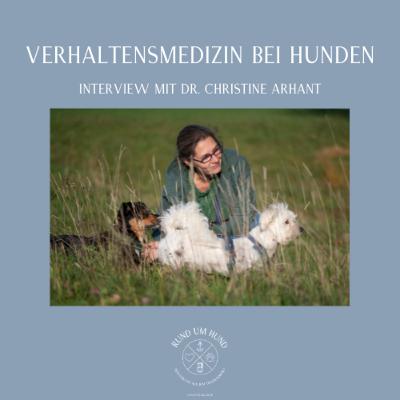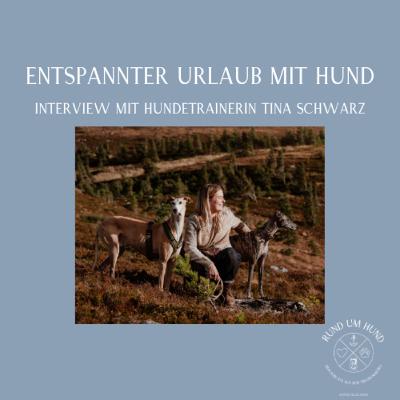Der Hund: Jäger oder Sammler?
Description
Was ist der Hund eigentlich? Immer noch ein klassischer Jäger wie der Wolf? Oder doch eher ein Aasfresser? Oder gar Sammler?
Diese Frage ist gar nicht so einfach zu beantworten, denn selbst der Wolf oder auch der Fuchs zeigen Verhaltensweisen, die man ihnen kaum zutraut. Was sind unsere Hunde überhaupt? Und wie sieht es mit anderen Hundeartigen wie etwa dem Wolf oder dem Rotfuchs aus? Sind sie wirklich klassische Jäger? Oder doch eben Sammler? In dieser Folge versuche ich, diesen Fragen auf den Grund zu gehen.
QUELLEN
Axelsson, Erik, et al. "The genomic signature of dog domestication reveals adaptation to a starch-rich diet." Nature 495.7441 (2013): 360-364.
Boitani, Luigi, and Erik Zimen. "Status of the wolf in Italy." IUCN PUBLICATIONS NEW SERIES Supplementary Paper No 43 5 (1973).
Bradshaw, John WS. "The evolutionary basis for the feeding behavior of domestic dogs (Canis familiaris) and cats (Felis catus)." The Journal of nutrition 136.7 (2006): 1927S-1931S.
Dănilă, Gabriel, Valerian Simioniuc, and Mihai Leonard Duduman. "Research on the Ethology and diet of the stray dog population in the areas bordering the municipality of Suceava, Romania." Veterinary Sciences 10.3 (2023): 188.
Demirbas, Yasemin Salgirli, et al. "Population control of free-ranging dogs in turkey: Never kill strategy." Journal of Applied Animal Ethics Research 1.2 (2019): 209-215.
Doherty, Tim S., et al. "The global impacts of domestic dogs on threatened vertebrates." Biological conservation 210 (2017): 56-59.
Ferretti, Francesco, et al. "Food habits of wolves and selection of wild ungulates in a prey-rich Mediterranean coastal area." Mammalian Biology 99 (2019): 119-127.
Gazzola, Andrea, et al. "Predation by wolves (Canis lupus) on wild and domestic ungulates of the western Alps, Italy." Journal of Zoology 266.2 (2005): 205-213.
Johnson, Christopher N., and Mike Letnic. "19 Introducing a new top predator, the dingo." Invasion biology and ecological theory: Insights from a continent in transformation (2014): 414.
Lezama-García, Karina, et al. "Exploring the stray dog crisis: When the human–canine relationships breakdown." Journal of Animal Behaviour and Biometeorology 13.1 (2025): 2025003-2025003.
Meriggi, Alberto, et al. "Short-term responses of wolf feeding habits to changes of wild and domestic ungulate abundance in Northern Italy." Ethology Ecology & Evolution 27.4 (2015): 389-411.
Morgenthaler, Annick, et al. "Urban dog attacks on magellanic penguins in a protected area." (2022).
Peterson, Rolf O. "Wolf–moose interaction on Isle Royale: the end of natural regulation?." Ecological Applications 9.1 (1999): 10-16.
Poyarkov, A. D., A. O. Vereshchagin, and P. L. Bogomolov. "Study of stray dog (Canis familiaris population): accounting of their number in Moscow. Report 2." (2011): 724-732.
Sarkar, Rohan, Shubhra Sau, and Anindita Bhadra. "Scavengers can be choosers: A study on food preference in free-ranging dogs." Applied Animal Behaviour Science 216 (2019): 38-44.
Smith, Lauren M., et al. "The effectiveness of dog population management: A systematic review." Animals 9.12 (2019): 1020.
Werder, Cornel, et al. "Nachhaltige Schafsömmerung: Teilprojekt 24 im Verbundprojekt AlpFutur." AlpFUTUR: Zukunft der Sömmerungsweiden in der Schweiz. Agroscope ART und WSL, 2011. 33-33.
TREUHUND TAGE 2026
DAS TREUHUNDBÜRO
Alles für ein harmonisches Leben mit deinem Hund.
Zum Kurs LEINE MACHT LAUNE
Zum Kurs CALM YOUR DOG











